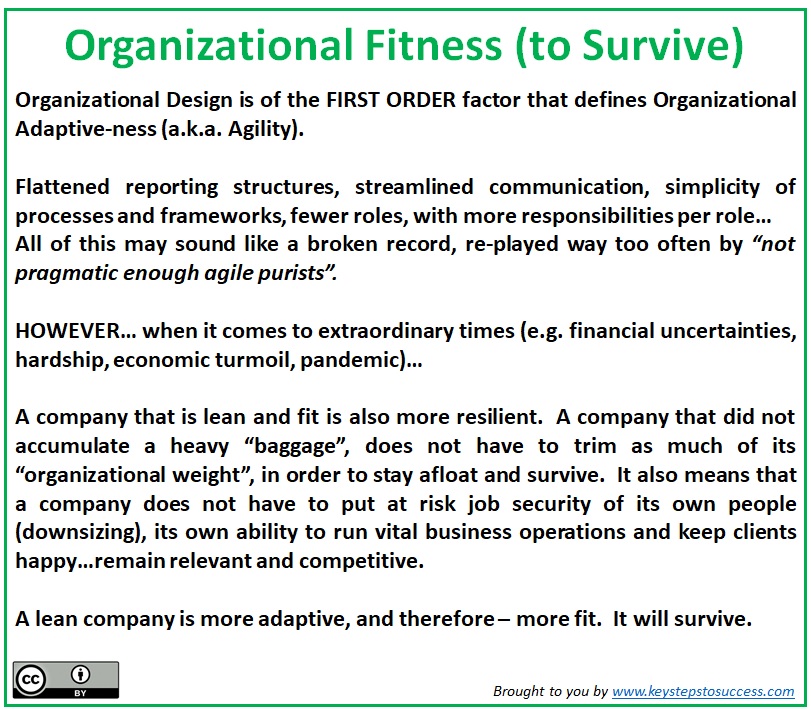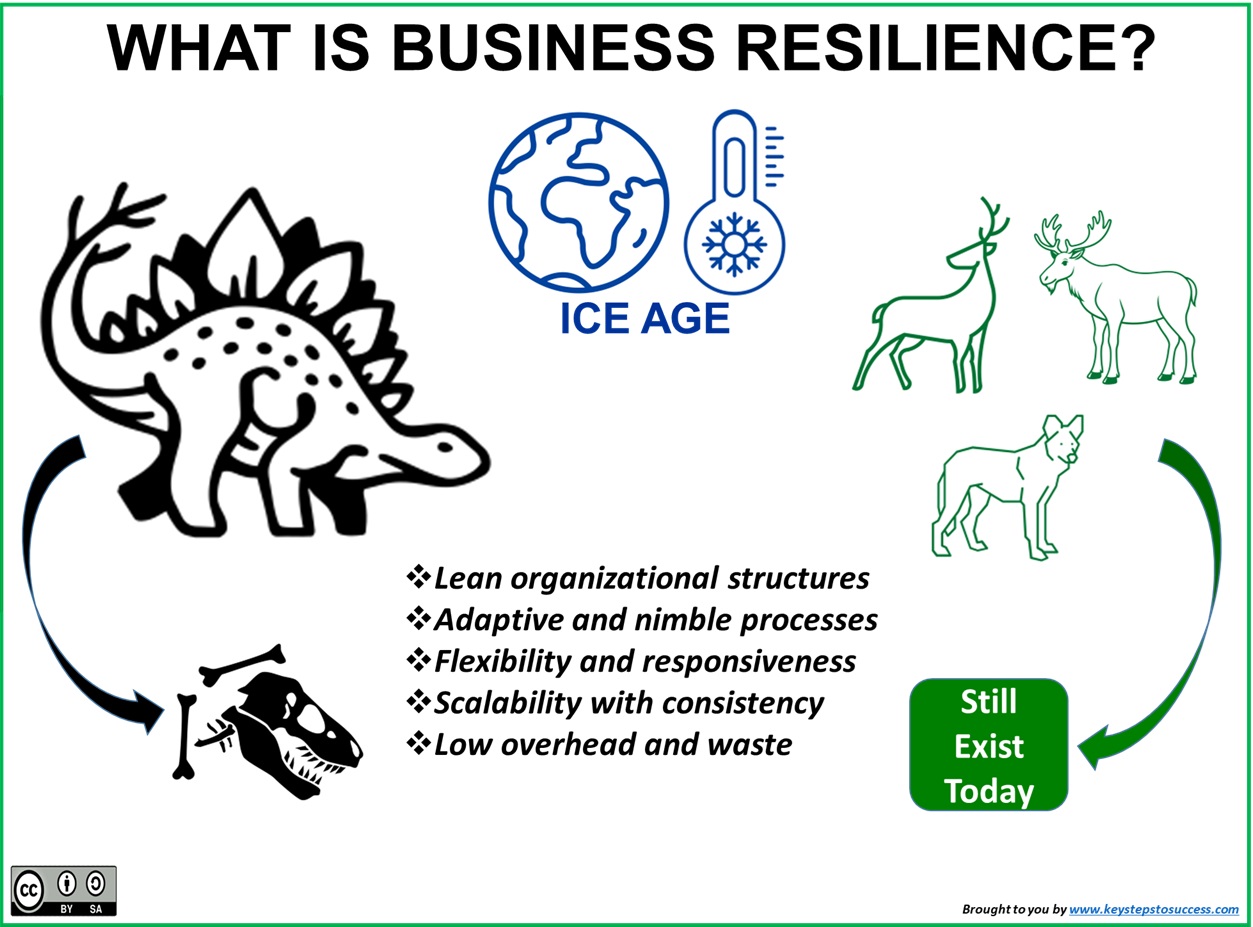…Fast-forwarding to modern days….
What is Business Resilience?
“It is the ability of an organization to quickly adapt to disruptions, while maintaining continuous business operations and safeguarding people, assets and overall brand equity.”
Today, how many organizations can claim, with confidence, that they would be able to withstand adverse economic conditions, high market volatility and unpredictably disruptive effect of AI? How many organizations can truly say that “this does not pertain to us” or “we are too big and too strong to fail“?
What are some of the key characteristics of an adaptive and resilient organization?
- Universally understood goals and priorities
- Consistency of processes and principles
- Short feedback loops and flexible responsiveness
- Simplified organizational hierarchies (de-layering/de-scaling)
- Quickly adaptive cross-functional product/feature teams
- Technical excellence and technological innovation
- Operational efficiency
- Reduction of local optimization and waste
- Frequent and safe experimentation
- Culture of creativity and learning
To meet the above criteria, an organization should seriously rethink its organizational design – the first order-factor that defines system dynamics.
Today, how many organizations are willing and able to rethink their organizational blueprint, revisit HR norms and policies, change employees career path?
One of the well-known and thoroughly experimented organizational design system that has always strongly supported Business Adaptiveness and Resilience, but perhaps without making any specific claims for it, is Large Scale Scrum (LeSS). Organizations that wish to look ahead and proactively prepare themselves for potential disruptive effects of the modern corporate world should look into LeSS more seriously, and not just from a stand-point of ‘agile for multiple product teams’ but from the angle of pursuing a resilient organizational design that will increase a company’s chances to survive and prosper.
Lastly, coming from the historical perspective (Darwinian Survival of the Fittest Theory), it is important to remember that Organizational Fitness depends one the first-order factor of Organizational Adaptiveness (agility) and it is ORGANIZATIONAL DESIGN.

Read more about Business Resilience of Large Scale Scrum (LeSS) Organizational System at https://less.works/business-resilience/what-is-less

